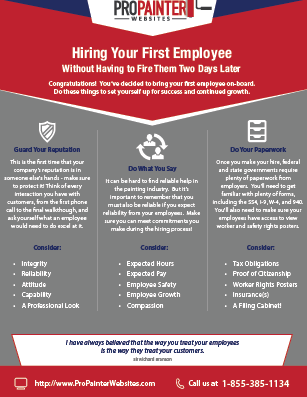Examine The Duty Of Seasonal Consider The Success Of Commercial External Paint And Uncover The Most Effective Times To Protect Enduring Outcomes For Your Task
Examine The Duty Of Seasonal Consider The Success Of Commercial External Paint And Uncover The Most Effective Times To Protect Enduring Outcomes For Your Task
Blog Article
Authored By-Carlson Decker
When you're intending a business external paint job, seasonal elements can make or break your outcomes. You'll intend to think about exactly how temperature level and humidity influence paint application and drying times. Selecting source website can ensure your paint sticks appropriately and lasts longer. But which periods are really the very best for this type of work? Let's discover the crucial elements that can impact your job's success.
The Impact of Temperature Level on Paint Application
When you're preparing a commercial exterior paint task, the temperature level can significantly affect just how well the paint adheres and dries.
Preferably, you want to paint when temperatures range in between 50 ° F and 85 ° F. If it's as well cold, the paint may not heal effectively, leading to issues like peeling or fracturing.
On the other hand, if it's also hot, the paint can dry also promptly, preventing proper adhesion and causing an unequal coating.
You must also consider the time of day; morning or late afternoon provides cooler temperature levels, which can be much more desirable.
Always examine the manufacturer's recommendations for the particular paint you're using, as they typically give guidance on the excellent temperature variety for optimal results.
Moisture and Its Result on Drying Times
Temperature level isn't the only ecological element that influences your business outside painting task; moisture plays a significant role also. High humidity degrees can slow down drying times drastically, impacting the total quality of your paint job.
When the air is saturated with moisture, the paint takes longer to cure, which can cause concerns like poor adhesion and a higher threat of mold growth. If you're painting on a particularly moist day, be planned for extensive delay times in between coats.
It's crucial to monitor regional climate condition and strategy accordingly. Preferably, aim for moisture degrees in between 40% and 70% for optimum drying.
Keeping these consider mind guarantees your project stays on track and supplies a lasting surface.
Best Seasons for Commercial Exterior Paint Projects
What's the most effective season for your commercial outside paint projects?
Springtime and early loss are normally your best choices. Throughout these periods, temperatures are light, and humidity degrees are frequently reduced, creating perfect problems for paint application and drying out.
foyer painting , which can create paint to completely dry also rapidly, bring about poor attachment and surface. Similarly, winter season's chilly temperature levels can hinder proper drying and curing, risking the longevity of your paint job.
Aim for days with temperature levels between 50 ° F and 85 ° F for optimal results. Keep in mind to check the regional weather forecast for rainfall, as wet problems can destroy your job.
Preparation around these aspects ensures your paint task runs smoothly and lasts much longer.
Verdict
In conclusion, planning your industrial external painting tasks around seasonal factors to consider can make a significant difference in the result. By scheduling work throughout the suitable temperature levels and humidity levels, you'll guarantee far better adhesion and drying times. Keep in mind to keep an eye on regional weather report and pick the correct time of year-- spring and early loss are your best options. Taking these actions will certainly aid you accomplish a sturdy and expert coating that lasts.
